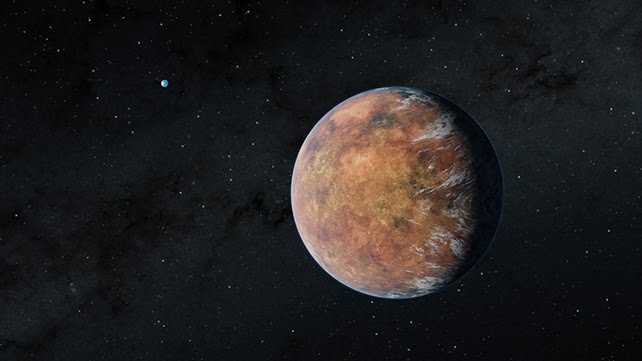Planets that mimic Earth closely look like a decent place to start when it comes to finding life outside of our solar system. Now that TOI 700 e has joined that list of potential prospects, we can officially say hello.
It has been established that TOI 700 e orbits its star, TOI 700, within the habitable zone. That area of space would have a considerable amount of water on its surface at a temperature suitable for a liquid state.
These types of planets are thought to be “just right” for life as we know it because they are neither too warm for a layer of ice nor too cold for vapour to form. It is thanks to NASA’s Transiting Exoplanet Survey Satellite, or TESS, that TOI 700 e was discovered.

Origin Of “TOI 700”
Planetary scientist Emily Gilbert of the NASA Jet Propulsion Laboratory (JPL) in California claims that this is one of very few known systems with several small, livable planets.
“The TOI 700 system is therefore a promising option for further investigation. Planet e is roughly 10% smaller than planet d, therefore the system also demonstrates how more TESS observations enable us to discover ever-smaller worlds.”
Approximately 100 light-years from Earth in the Dorado constellation, there is a tiny, cool star called TOI 700. It is classified as a M dwarf star. The planets must be closer to these stars in order for the temperatures to be warm enough for water to exist on them because they are neither as large nor as hot as our own Sun.
Whereabouts Of “TOI 700”
Regarding the Earth’s crust, it is thought to be 95 percent the size of the Earth and largely composed of rocks. It is located in what is known as the “optimistic” habitable zone, an area where water may have once been present.
The smaller “conservative” habitable zone, where liquid water is thought to be most likely to exist for the duration of a planet’s existence, is where TOI 700 d is located.
These extrasolar planets, or exoplanets, are visible to telescopes as frequent blips in their parent stars’ light when they transit them, or pass in front of them.
Delineation Of TOI 700
Larger planets offer easier opportunities to be observed than small, rocky worlds because they block more of the star’s light. As a result, Earth-like discoveries like this one are a rare treat.
While TOI 700 d, which is a little farther away from its neighbour, takes 37 days to complete one orbit, TOI 700 e completes one in 28 days. More information was required to prove that the silhouette did, in fact, represent a new planet because TOI 700 e is smaller than TOI 700 d.
What Does Specifics shows?
Astrophysicist Ben Hord from the University of Maryland argues that if the star or planet were a little bit closer or a little bit larger, they would have been able to detect TOI 700 e in the first year of TESS data.
The signal, however, was so weak that it required an extra year of transit observations to be recognised. Any strategy we can find to focus the search for life—which TESS is doing by watching 100 million stars—will be helpful.
One of the finest methods we have for doing that is to find exoplanets in their respective habitable zones.
It is believed that TOI 700 e and TOI 700 d are tidally locked, meaning that one side of the planet is constantly facing its star (in the same way that the same side of the Moon is always visible from Earth).
It’s true that the possibility of sophisticated life developing successfully is decreased when one side of a planet is constantly roasting in the sun.
Conclusion
Even while these “just right” planets aren’t exactly ideal for life, we can learn a thing or two from them about how to find solar systems that might be more suitable for it.
Astronomers can learn more about how star systems like the one we’re in evolved and how nearby planets got to be in their current orbits by studying star systems like the one we’re in.
Despite the discovery of more than 5,000 exoplanets to date, astronomer Joey Rodriguez of Michigan State University thinks that there is still plenty to learn about TOI 700 e.
The study is now accessible to view on arXiv after being accepted for publication in the Astrophysical Journal Letters.
